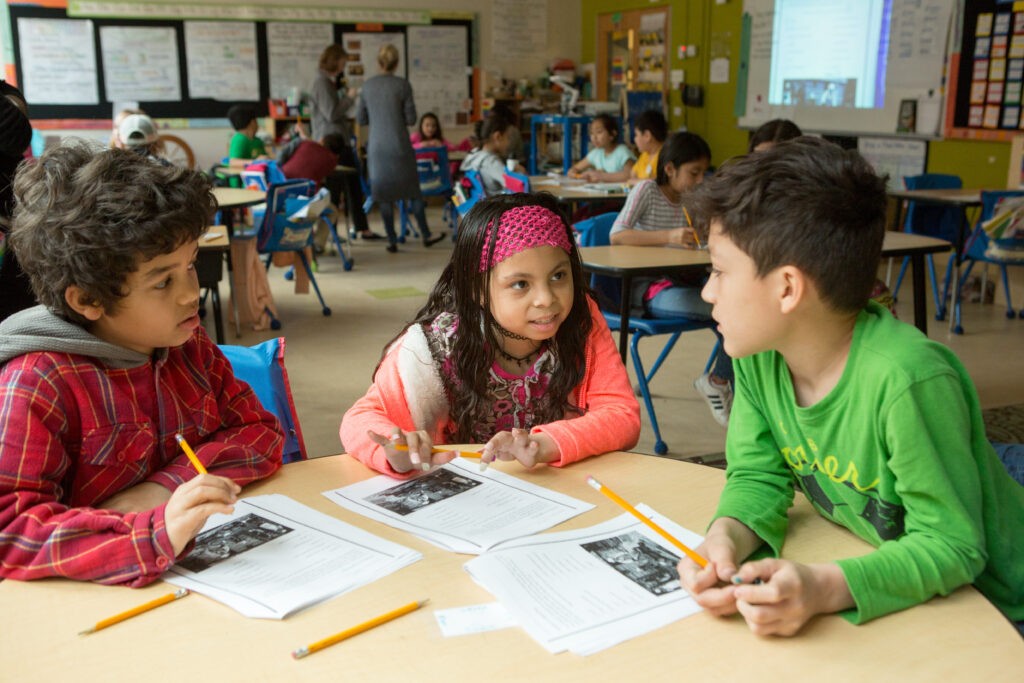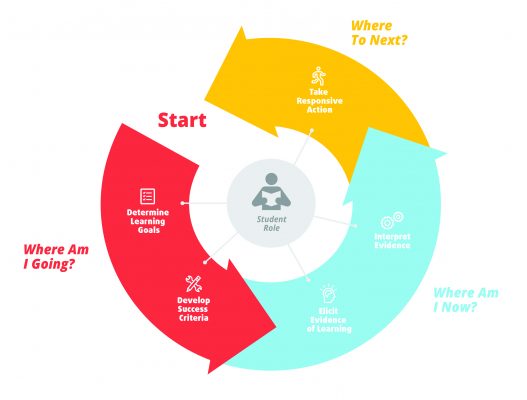Students Use the Formative Assessment Feedback Loop
By Barbara Jones, Joe Nelson, and Nancy Gerzon

Our team at WestEd, Formative Insights: Assessment for Learning, has been working with teachers in formative assessment to increase student agency for the last 10 years. Recently, we’ve had our ears to the ground to learn with and from teachers about how formative assessment and student agency translates to, and enhances, online learning. This post shares insights and ideas to strengthen online learning based on what we’ve learned from teachers using formative assessment practices.
Being explicit about learning structures
At this point in time, when so many teachers and students are learning how to work together online, teachers are trying to clearly communicate roles and responsibilities, expectations, and goals. It is a challenge to get everyone on the same page. In this blog post, we describe some specific strategies used by Joe Nelson, an 11th grade English teacher in Tulsa, OK, to support developing common understandings of learning structures. He is a student of our Student Agency in Learning (SAIL) course and is at the forefront of thinking through how to apply the course principles online, specifically utilizing and communicating formative assessment learning structures.
Where to begin

Starting on day one, Joe wanted his students to have a bigger picture understanding of how they would be working together during the school year. He began with posting a video introducing himself to his new students and then describing the formative assessment feedback loop as a framework to ground their cycles of learning.
He explained that the feedback loop starts with students asking the question, Where am I going? Then based on the answer, setting learning goals and success criteria. He said that after spending time working towards the goal, they would then ask, Where am I now? Students would be engaged in eliciting and interpreting evidence of learning to answer the question. The final step in the feedback loop, he said, is to ask, Where to next? At this point, students would take action based on the collected evidence to move their learning forward.
In order to have this framework firmly embedded into the cycle of teaching and learning, Joe explained in the video how this will play out each day of the week for students. With this information, students will then know which part of the feedback loop they will be engaged in each day, and can monitor their own learning in relation to those three big questions. Here is the plan Joe described.
- On Wednesdays, students will get familiar with the learning topic by doing pre-work before they meet.
- On Thursdays, in video sessions, Joe will introduce/co-construct the learning goal and success criteria with students.
- On Fridays, on their own, students will engage in new content through reading, video, and other media to get closer to the learning goal.
- On Mondays, in video sessions, students will engage in discourse, direct instruction, and collaboration to make further sense of the topic in a social setting.
- On Tuesdays, students will engage in more self-reflection and application of their new knowledge to inform next steps.
Modeling element of the feedback loop
For each new learning structure Joe introduced to students from the feedback loop, e.g, using learning goals and success criteria, he first practiced it himself, both to get a better sense of it and to model for his students how to use it. Below is an example of success criteria he created for his own online teaching. Joe uses this to help him monitor his own progress, and as a model of what he wants his students to create for themselves as they manage their own learning.
Success criteria for online teaching
- Provide pre-work for students to connect funds of knowledge to current learning goals.
- Establish learning goals that show students the intended learning for the week.
- Collaborate with other teachers on best practices for remote learning.
- Demonstrate what success looks like using video to model effective habits.
- Provide feedback to students in a variety of ways.
- Allow multiple ways for students to demonstrate evidence of learning.
- Create opportunities for students to connect the intended learning to their community.
Using these processes online, Joe was able to give students a big picture overview, a mental model, of how they will learn and why they will learn that way. He then shared specific practices that students will engage in each day, either on their own or with peers and their teacher. Finally, Joe applied each element of the formative assessment feedback loop to his own learning, deepening his knowledge of how to effectively teach online and providing a model for students to manage their own learning independently. In this way, students were given the tools they need to increase their agency in online learning and become self-directed learners.
